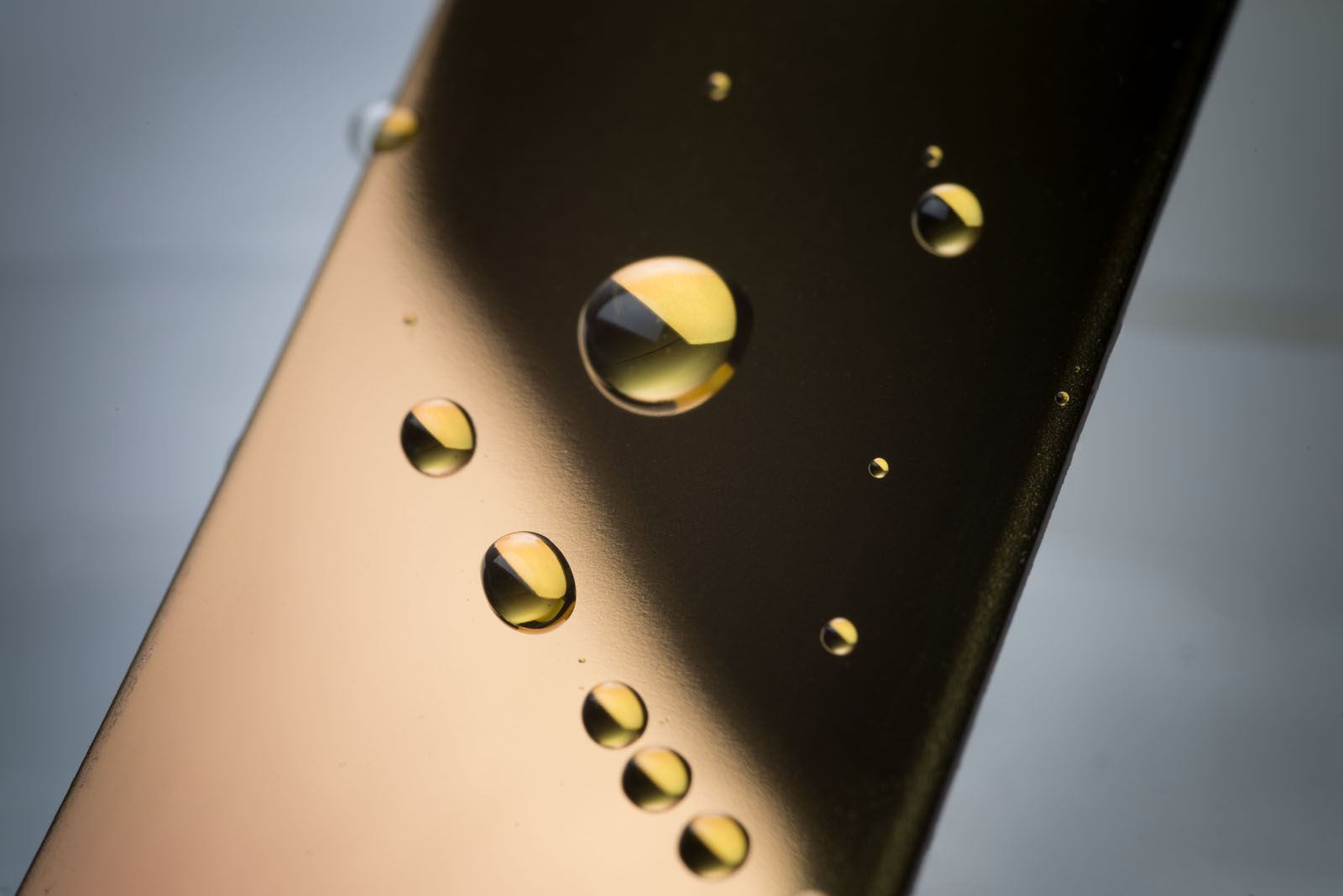Hannover Messe 2013
Tuned coatings ensure cleanliness
Contaminated industrial plants cost billions every year in Germany alone. Special coatings can prevent the build-up of contaminants. Researchers are now able to adapt ultra-thin coatings for an extremely wide range of applications.
All of us are faced with the same daily battle against dirt. Nevertheless, once laziness is overcome, vacuum cleaners, dishwashers or washing machines can relatively quickly restore order in our homes. However, keeping industrial plants and equipment clean is a different kind of challenge entirely. In such cases, the devil is often in the detail, as is the case in, for example, milk pasteurization processes. Dissolved milk proteins tend to build-up in pipes, boilers or heat exchangers of the equipment being used. After one working shift they are already soiled to such a degree that the entire plant has to be shut down for cleaning. This translates into huge costs for manufacturers. Such deposits, that are referred to by experts as “fouling”, can disrupt production processes. Studies suggest that this results in costs of between 5 and 7 billion euros per year in Germany alone.
Tailor-made for every requirement
At the Surface trade fair (8 to 12 April, Hall 3, Stand D25) in Hanover / Germany, the Fraunhofer Institute for Surface Engineering and Thin Films IST, based in Brunswick (Braunschweig) / Germany is exhibiting a range of technologies that prevent fouling within plants in the first place. Special coatings prevent proteins, salt crystals and calcium carbonate deposits from sticking to the surfaces of plants or system components. The difficulty in achieving this is that the types of deposits vary depending on the materials used to manufacture the plant and the liquids used. Scientists have now found a way to adapt the coatings for a wide variety of different industrial applications and loads. They achieved this by “custom tuning” the structures and surface energy of the coating surfaces. One important variable in this formula is the surface energy of the coating. It determines to what extent deposits are able to cake on. “The range of properties relating to these layers range from high wear protection through to an extreme anti-fouling effect. With the help of special process technology, we are now able to create practically any desired property”, explains Dr. Martin Keunecke, Head of Department for New Tribological Coatings at IST.
The coatings are made up of carbon and other elements and are just a few micrometers thick. That corresponds to approximately 50 times thinner than a human hair. Both extremely hard and durable, carbon layers are characterized by excellent anti-corrosion and anti-wear properties. Their surface energy, and thereby cohesive properties, can be further reduced by integrating non-metallic elements such as fluorine and silicone. This leads to an additional anti-fouling effect. “Depending on the type and quantity of the elements used, we are able to control the properties of the coatings in a targeted way”, explains Dr. Peter-Jochen Brand, Head of Department for the Tribology Transfer Center at IST. “This is necessary because industrial plants are subjected to a wide range of differing stresses resulting from liquid substances. Just consider milk processing or fruit juice manufacturing in the foods industry, paint production in the chemical sector, production of medications in the pharmaceuticals industry or the transportation of crude oil.”
Strong demand for anti-fouling solutions
Industry currently uses carbon-based coatings primarily in order to reduce friction and wear. Although already in great demand, anti-fouling applications are still in their infancy. For this reason, Keunecke and Brand are anticipating fresh momentum from the market as a result of their innovation. The scientists will demonstrate the versatility of their new anti-fouling coatings at the Hanover trade fair by way of a recreated fountain. Here, water runs over the variously tuned surfaces and forms – depending on the degree of the anti-adhesive effect – different droplet patterns. “Now that we understand how to individually configure the layers, the next stage involves tackling the question of how to most efficiently produce the coated equipment. Anti-fouling already works extremely well for external surfaces, however, internal coating, for example for pipes, is anything but straightforward. For this reason, we are now collaborating with industry and research partners to create new manufacturing processes”, concludes Keunecke.
